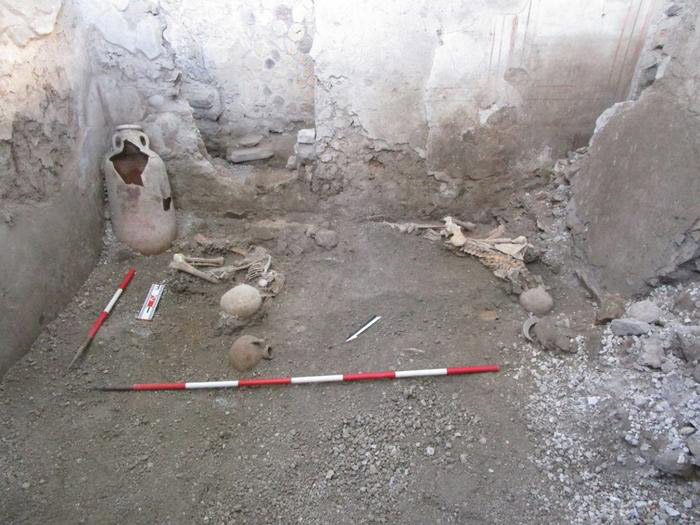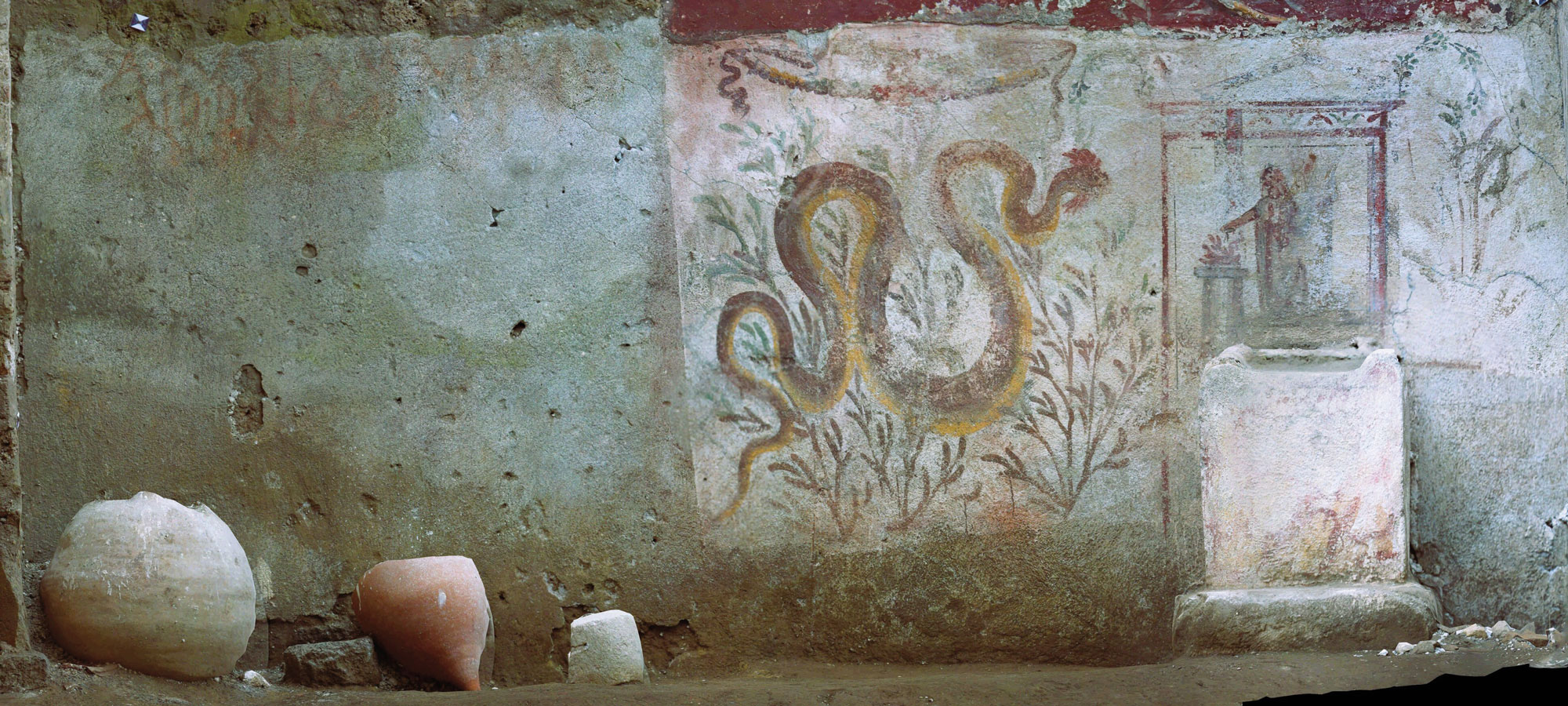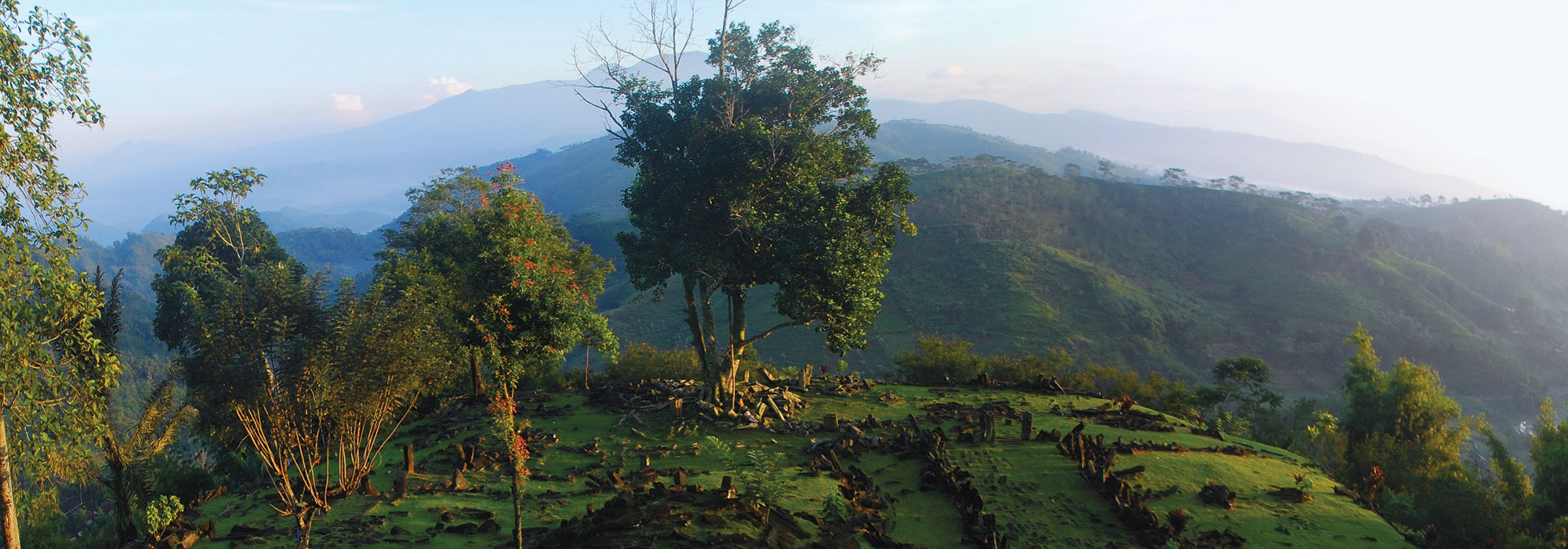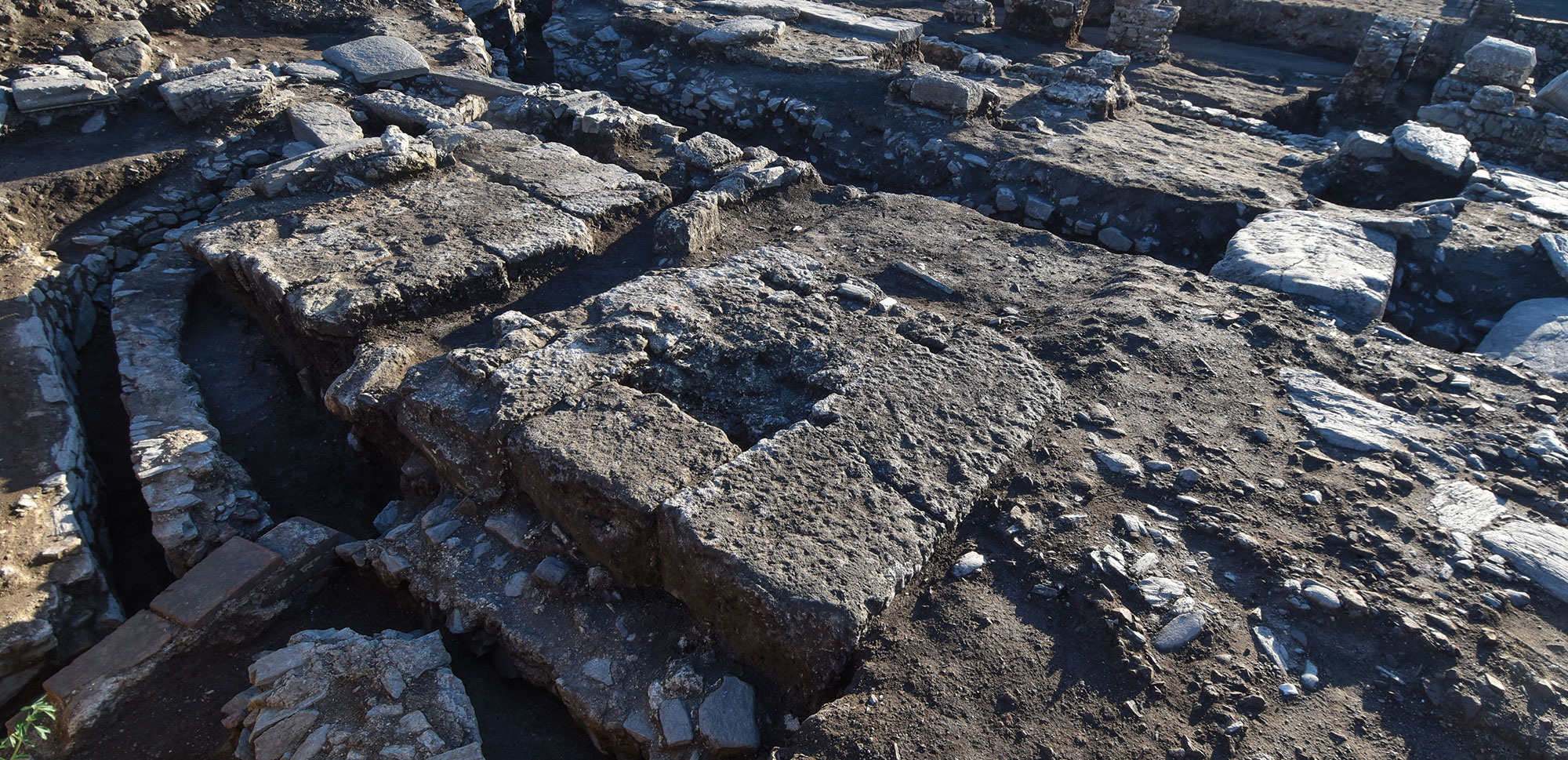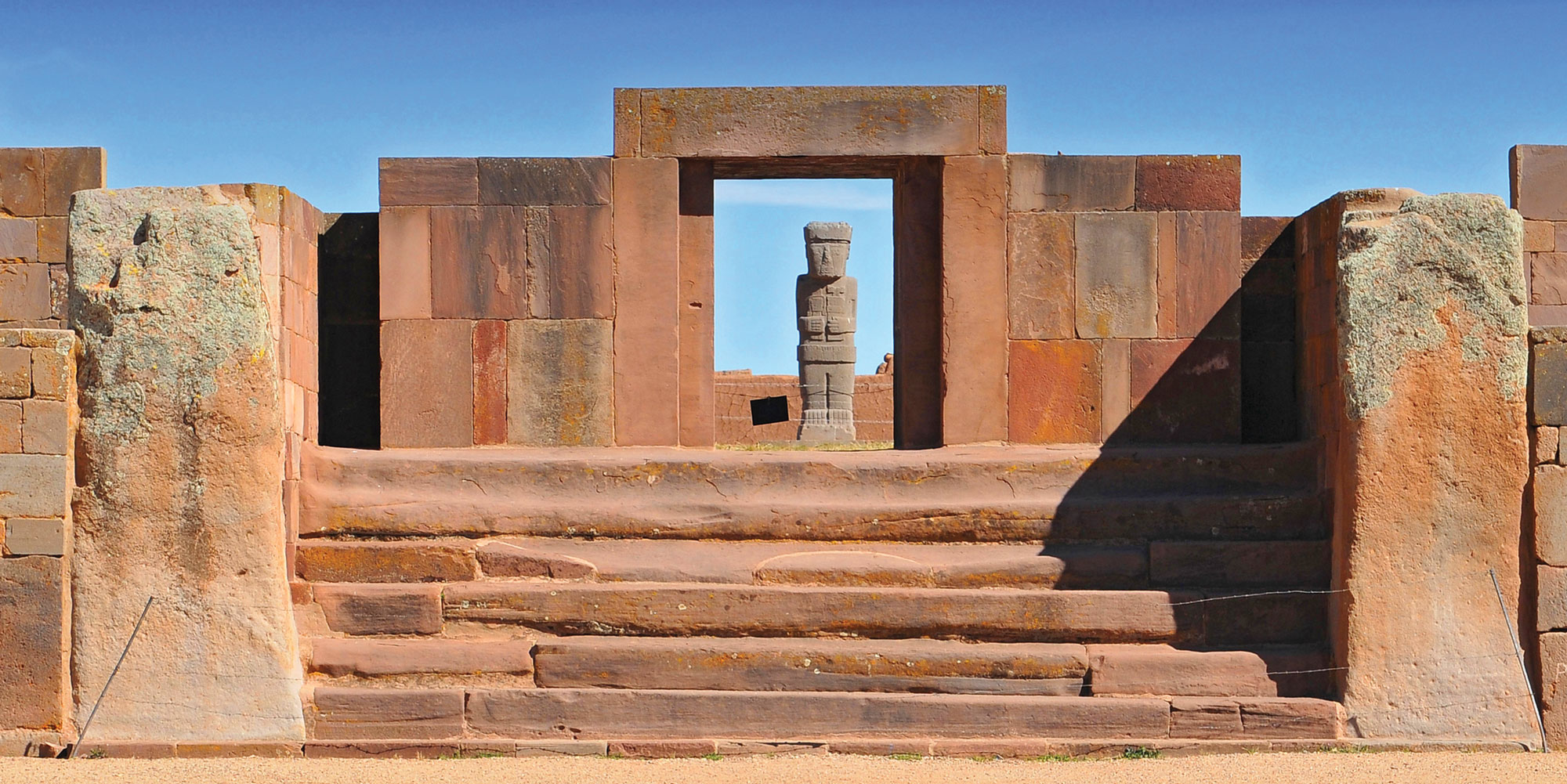NAPLES, ITALY—Cosmos Magazine reports that a new study of the remains of two men unearthed at Pompeii suggests that their injuries are consistent with building collapse caused by earthquakes during the eruption of Mount Vesuvius in A.D. 79. The remains of two men around the age of 50 at the time of death were recovered from the House of the Painters at Work and show signs of severe fractures and trauma injuries. The first individual is thought to have been killed instantly by the collapse of a wall. Wall debris also covered the pelvis and right leg of the second man, who may have attempted to protect himself with a round wooden object, traces of which were found in the ash. Both men were found on top of the small rock and ash particles known to have fallen on Pompeii for about 18 hours before the eruption. “The people who did not flee their shelters were possibly overwhelmed by earthquake-induced collapses of already overburdened buildings,” said anthropologist Valeria Amoretti of Pompeii Archaeological Park. “This was the fate of the two individuals we recovered,” she concluded. Read the original scholarly article about this research in Frontiers in Earth Science. To read about another recent discovery in Pompeii, go to "Pompeian Politics."
